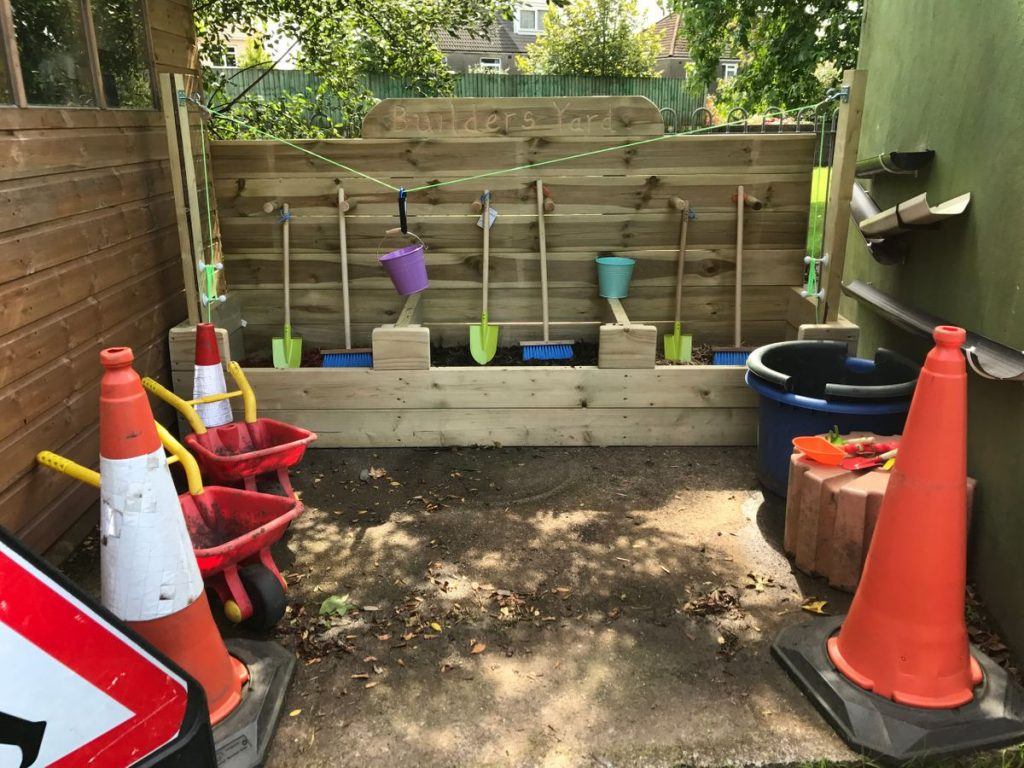Building an Outdoor Classroom: Where to start

Plenty of studies over the years have illustrated the positive impact of outdoor play and the outdoors generally upon students and learning. Whether it’s for a Forest School specifically or to provide a different kind of outdoor education setting for some hours of school-based curriculum learning, an outdoor classroom is key.
Forget any stereotypes you have around the word ‘classroom’ – all it means in this instance is a communal space, protected from the worst of the elements, to come together and learn in.
These sorts of undertakings are usually quite grandscale investments – both in terms of financial commitment, time, and emotions.
You could easily end up spending a lot of time, money and energy misdirected at less crucial aspects of your project and ignore the priorities. That’s why we’ve laid out the basics of outdoor classroom provision in this blog – to prompt you to consider the crucial elements of your project, and leave irrelevances at the wayside, so you can really get your outdoor classroom off plan and into reality!
What are the benefits of outdoor learning?
There are many benefits to taking learning into an outdoor environment. Some of them are:
- Happier, more relaxed students
- Increased interaction with and knowledge around nature and the outdoors
- Increased retention rate of the learned topic
- Opportunity to vary the learning environment, if the school cannot afford school trips
- Incorporating physical activity into everyday life
- Improved learning for tactile and experiential learners, and neuro-diverse students
- Improved social skills and lowered levels of violence and bullying
- Opportunity for local community engagement in outdoor spaces
- Grounded interaction with the landscape and surrounding environment
Top 10 Reasons Outdoor Classrooms succeed and fail
Outdoor classrooms are a large undertaking. They are not a project that many schools, organisations, or individuals can afford to not make a success of. But what makes them fail? Equally, what makes them succeed? We outline the top five of each category below.
What makes outdoor classrooms succeed?
- Support from the community
- Involvement from the student body
- Financial support/funding
- Adequate teacher training
- Adequate administrative support
What makes outdoor classrooms fail?
- No plan for maintenance and upkeep
- Teachers not knowing how to use the outdoor space for lessons
- Not enough funding
- Vandalism
- Expansion of the school, or relocation
Do you need an outdoor classroom?
If you can answer yes to the questions below, then an outdoor classroom is an achievable reality for your educational setting.
First off, would your school benefit from having an outdoor learning area? If you already have some provisions for outdoor learning and you aren’t using them, this is a question to consider.
Secondly, do you have adequate space for converting into an outdoor classroom? They do take up space (although our range of outdoor classrooms comes as small as 1.6m x 1.6m, and as large as 8m x 4m), and if space is at a real premium in your environment, you may have to juggle the value of the space you lose with the value of your new learning provision.
Is there general support and engagement from your school community to support this outdoor learning environment? You should consider everyone relevant to this, right from the Heads through the teachers to the maintenance staff, as it will impact everyone involved in its use and upkeep. Do you have at least one project leader who is prepared to really invest in this project and work long hours to get it off the ground?
Equally, such a classroom may require continued investment, so make sure the school board and or trustees are also supportive of this venture (will they be happy to invest funds to rectify vandalism, for example?). Can you think of any community partners who might be able to co-fund the venture and reduce the direct cost to you?
Who will take care of the classroom during holiday periods? Unlike an indoor classroom that can be locked and left, an outdoor classroom may require more of an eye over holiday periods, as well as regular upkeep such as repainting or varnishing. Have you considered how the space will be used year-round? (If it’s a wet, muddy area you’ll have to take this into account if students will then be returning to an indoor setting afterwards, if it’s very windy will the shelter be adequate?)
Have you considered the reality of all the potential challenges this project might face? For example, can you acquire enough funding? Will it create conflicts? Have you planned out solutions to these potential issues?
Finally, have you embarked on similar projects in the past in your learning environment, and have they been broadly successful? If this is an entirely new venture, can you summarise the benefits that an outdoor classroom would hold for your situation in particular? Keep it concise – this is the ‘elevator pitch’ you’ll use to sell your outdoor learning environment to those you seek emotional or financial investment from.
The first steps to creating your classroom
1. Get people onboard
First things first, you need the commitment of the staff behind the scheme. That’s the administrators and teachers. Then look more broadly for support from the student body, their parents, and the local community.
2. Create a team
You’ll need a team of willing participants to make this happen. It’s great if the team has representation from every sort of participant involved – from teachers and administrators to students and parents. School governors, the PTA, local volunteers and even local agencies are worth contacting, as everyone has a different talent which may add value to your team. Local businesses too may well be able to provide resources, finances or expertise, which they may consider donating free of charge to support your project.
3. Ready the site
You’ll need to choose the site for your outdoor classroom. Undertaking preliminary explorations into the site, including an inventory of plants and animals, and conditions, can be useful. Ditto, it’s good to assess the ways in which the landscape can be best used for outdoor learning. Consider the outlook (where will the sun be in the morning and afternoon, and is the site in full sun or shade?), and ideally aim for a site that offers both shade and sunshine, both for the students and to support the surrounding wildlife.
4. Get the volunteers involved
You’ll be surprised how giving people are with their time when they believe in a cause. Volunteer assistance and free labour can make all the difference, especially on a project that is already costly. Consider reaching out to local professionals such as landscape architects, gardeners, ecology experts and art teachers to create a building that works perfectly for the students, the space, and the local environment.
5. Acquire funding
Cast your net wide. As well as those with a vested interest (for example, school funds or parent donations), consider those who donation could benefit. Local businesses might appreciate free advertising to your market (local parents), in return for a financial donation. Similarly, local builders’ merchants might donate building materials, a garden centre might supply plants, birdfeeders, and woodchips…get creative!
6. Persevere
Patience is key! Of course it’s great to have a timeline, but be prepared for a project like this to take longer than you thought. Don’t give up! The outcome will be well worth your efforts!
How to engage with those three primary concerns: fundraising, design, & community engagement
Fundraising
Yes, you need to acquire money for this project. But how? Begin by seeking out local and national grants, both governmental and private, which might support you. This page on Learning Outside the Classroom lists plenty of grants and support mechanisms you may be able to call upon.
Off your own bat, there are ways to appeal to the school and broader community for support, too. As we mentioned above, exploit any individuals’ talents or professions that may be on offer to you, but you can also consider fundraising events, which can be a great way to drum up both cash and goodwill.
Design
Will you design the space yourself or opt for something premade, such as one of the Landscapes4Learning spaces? Initially, you’ll need to consider the layout and the design, alongside your budget. You’ll then need to plan for, organise and supervise, construction.
It’s important to seek the input of the whole team on these foundational decisions, and search for consensus or majority vote, throughout the process, to maintain everyone’s buy-in here.
Next, co-ordinate volunteers and contractors onsite to perform the jobs you need them to. Finally – purchase the required materials, for example one of our classrooms, such as the Compact Healey.
Community Engagement
Engagement across as many parties as possible is crucial! Starting in the school environment is obvious, with students, teachers, and then parents. But don’t be afraid to broaden this into community outreach – members of the wider community, both young and old, are invested in the educational possibilities of local children, and often love to make an impact on kids’ lives.
Try local newsletters, social media groups and even broader paid advertising opportunities to drum up support and engagement. Co-ordinate the classroom plans with the existing school ethos and curriculum before seeking partners and in-kind support on your goal towards this greater provision.
Is it time you explored the potential for an outdoor classroom in your learning environment? Landscapes4Learning provides a range of high-quality, durable and affordable outdoor play equipment for learning. Often designed in consultation with educators and early years consultants, we endeavour to provide the perfect stimuli and setting for your children to thrive in.
